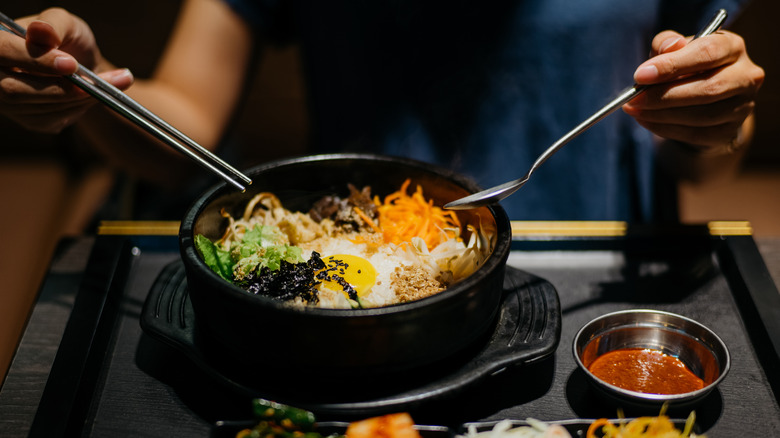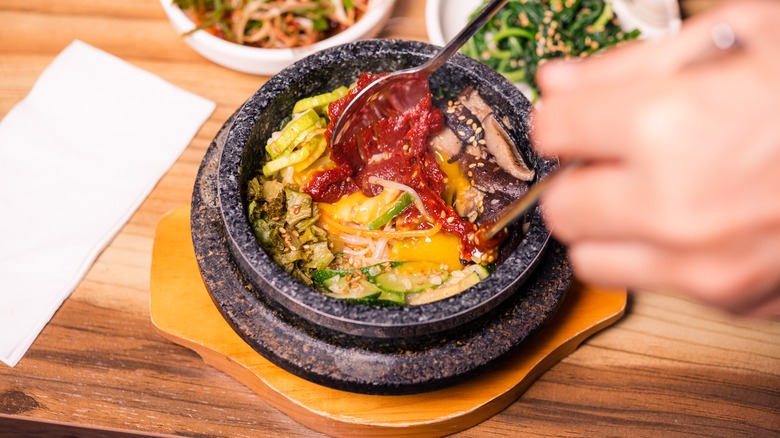The Traditional Way To Eat Korean Bibimbap Bowls
Our appetite for the addictive flavors of Korean food keeps on growing from year to year. In 2023, Google's number one recipe search was for the Korean rice bowl called bibimbap, showing the dish has made its way into not just our hearts but also our home kitchens! Whether you make the dish at home or order it from your favorite restaurant, there is one important tip you should know about eating bibimbap if you want to get the real, authentic taste –- don't be afraid to mix up the ingredients before you take the first bite.
The medley of flavors that top bibimbap's rice is a beautifully arranged, colorful array of vegetables and meats, all topped with a sunny side up fried egg, so it might seem uncouth to dig in and begin to mix everything together, but rest assured, that's the right thing to do. Translated, bibim means mixed, and bap is the Korean word for rice, so you're doing exactly what the dish's name says to do: mix up the rice.
The balance of mixed flavors is key to bibimbap
The rice in bibimbap can be steamed white rice or a mixture of grains, but you'll always find a set of seasonal, cooked vegetables on top, balanced to provide salty, sweet, hot, sour, and bitter flavors in one mouthful. Savory grilled beef is a common addition, but you'll also find seafood versions of bibimbap. Perched on top, you'll find a glistening fried egg, with its yolk ready to be stirred together with the meat and vegetables, along with a spoonful of savory, spicy gochujang sauce to round out the flavors.
It's also important to mention that although bibimbap is most commonly served in a metal bowl, there's a delicious variety named dolsot, named for the stone bowl served so hot that it actually toasts the rice on the bottom and also helps keep the rice warmer while you eat. The egg for dolsot is served raw, meant to be stirred right into the hot rice. No matter which bowl the bibimbap is served in, mixing it up is the traditional way to savor the flavor.

